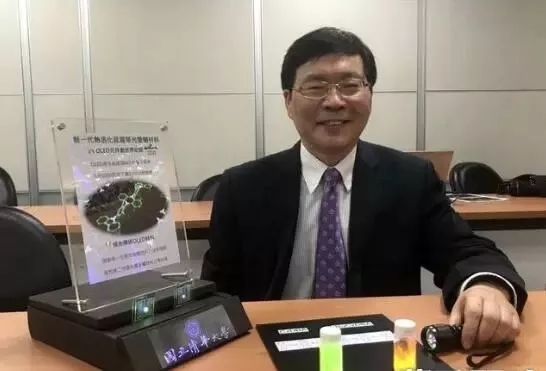Organic light-emitting diodes (OLEDs) have attracted attention because of the adoption of the iPhone X. However, OLED panels are currently expensive. The research team at Tsinghua University in Taiwan has developed a new generation of ultra-high-performance performance green OLED components. The performance of components is currently in the world record and is expected to be promoted. The panel and lighting industry in Taiwan has been upgraded, and outstanding research results have been honored as the first journal of the international optoelectronic field, Nature Photonics, on March 6.

Zheng Jianhong, a professor at the Department of Chemistry at Qing Dynasty, participated in the team to develop new OLEDs.
Foreign manufacturers have obtained a large number of OLED patent technologies in the past 10 years. In addition, OLED panels are widely used in mainstream mobile phones such as iPhone X and Samsung. At present, the LCD panel industry in Taiwan faces a turning point in industrial transformation and technology upgrade, but the development of OLED panels in Taiwan is serious. Lagging behind Japan and South Korea, the mainland region has expanded its OLED panel industry in recent years, posing a serious threat to the panel industry in Taiwan.
A team composed of Zheng Jianhong, professor of chemistry at Tsinghua University, Taiwan, and Lin Ruiwu, a professor of materials, has successfully made a major breakthrough in the research of "new dual-boron luminescent materials". As a new generation of green OLED components, the high performance is the current world record. It is expected to significantly reduce the cost of key luminescent materials and promote the upgrading of the panel and lighting industry in Taiwan.
Zheng Jianhong said that the commercially available OLED light-emitting layer is composed of the first-generation fluorescent material or the second-generation phosphorescent material, wherein the fluorescent element has a luminous efficiency of about 5%, and the calendering element is 20%. At present, the OLED material is rare precious metals such as ruthenium and platinum. As a result, the panel price is relatively expensive. The Taiqing team, with the support of the Ministry of Science and Technology, has developed a new dual boron material extreme performance OLED that utilizes boron as a cheaper material, breaking through the external quantum efficiency limitations of conventional fluorescent and neon OLEDs.
Zheng Jianhong analyzed the ultra-high-performance green OLED components with the team's skillful component process and related technologies, with an external quantum efficiency of up to 38%, which is much higher than the first generation 5% and the second generation 20 to 30%. In addition, the synthetic steps are streamlined and easy, and can be mass-produced, which greatly reduces the cost of key luminescent materials. This research and development is based on materials and can be applied to various OLED components. Even if mass production is no problem, it has been applied. Patent, it is estimated that the commercialization of materials can be completed within 2 years.

Solder Series Centronic Connector
Solder Series Centronic Connector
Current Rating:5A
Dielectric Withstanding Voltage:1000V for one minute
Insulation Resistance:1000MΩ Min.(at 500V DC)
Contact Resistance:35mΩ Max.
Temperature:-55°C to +105°C
Solder Series Centronic Connector
ShenZhen Antenk Electronics Co,Ltd , https://www.antenkelec.com